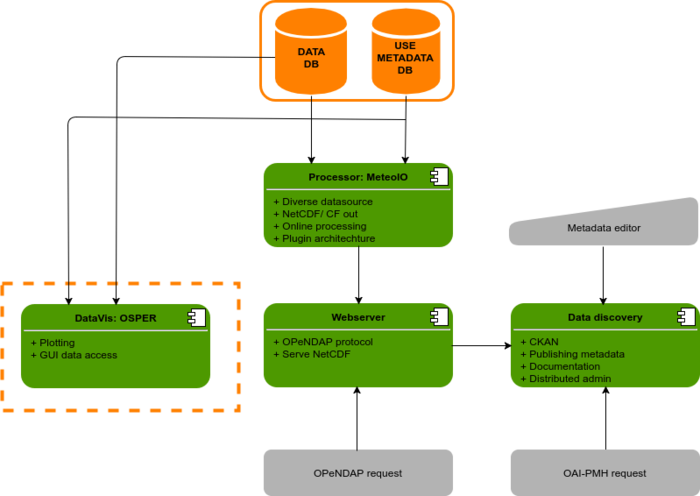SUMMARY
The World Meteorological Organization’s Global Cryosphere Watch is an international mechanism for supporting all key cryospheric in-situ and remote sensing observations. To meet the needs of WMO Members and partners in delivering services to users, the media, public, decision and policy makers. In order to fufill this role a global network of “CRYONET” stations has been established that report metadata to the GCW dataportal and provide means to access data using a decentralised model.
One of the most important milestones in achieving full interoperability between the GCW Data Portal and the individual CryoNet stations data centres is the ability to dynamically exchange metadata and data. Exchange of data and metadata is one of the most important benefits that GCW offers, and the interoperability of the GCW Data Portal must provide a software solution to address this.
To date 120 stations have been approved as CryoNet and Contributing stations of the GCW surface observing network; more than 50% of these are operated by universities and research organizations, which are not familiar with the WMO metadata and data exchange mechanisms and do not have the resources to adopt them. GCW adds value by being the “blackbox” whereby research scientists are not exposed to operational details (and costs) of WMO while WMO receives a standardised product and is not exposed to the true diversity of formats, standards etc. at the individual station level.
A demonstration project for coupling a small data-centre with the GCW Data Portal was initiated in 2015, in collaboration with the Swiss Federal Institute for Forest, Snow and Landscape Research (SLF). This demonstration project was successful in the dynamic sharing of metadata using the OAI-PMH protocol. The results achieved have provided a template for interoperability with data centres contributing to the GCW observing network. This presentation focuses on follow up interoperability software tool that enables stations to share data and metadata in diverse formats and standards to a single format based on the NetCDF common data model and utilising the CF convention. The specification for this interoperability package is as follows:
- “Sit-on-top” solution, easily integrated into existing data-management practices.
- Convert data from some arbitrary file or database form to a standard output (ie. NetCDF CDM)
- Serve this data using standard protocols (ie. OpeNDAP). A GUI based metadata editor + server (OAI-PMH).
- Do this cheaply and easily implemented (no developer required on data-centres side).
We present a prototype of this tool and how it could be a prototype for diverse data interoperability applications in the field of environmental monitoring.

GCW Portal <!–
–>
